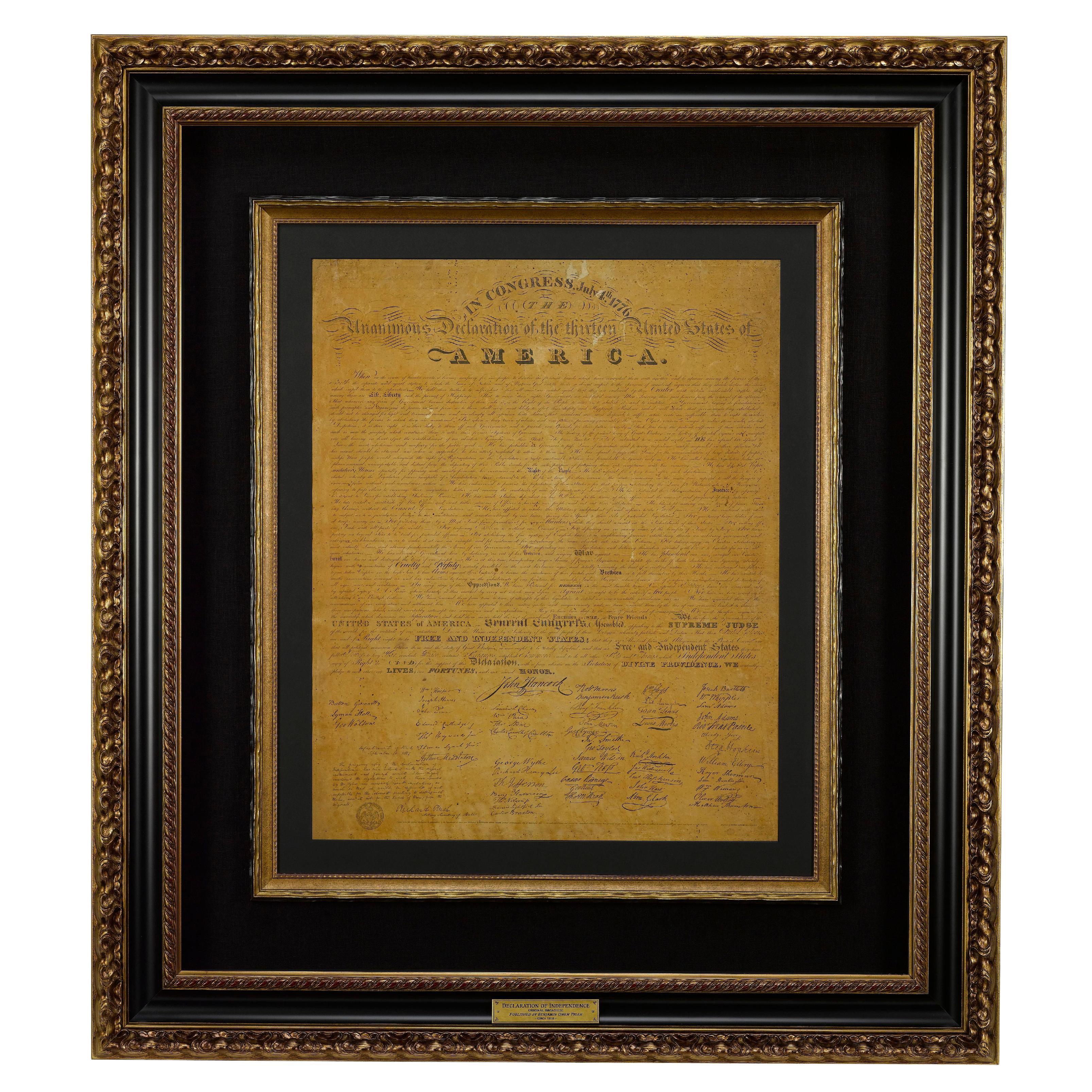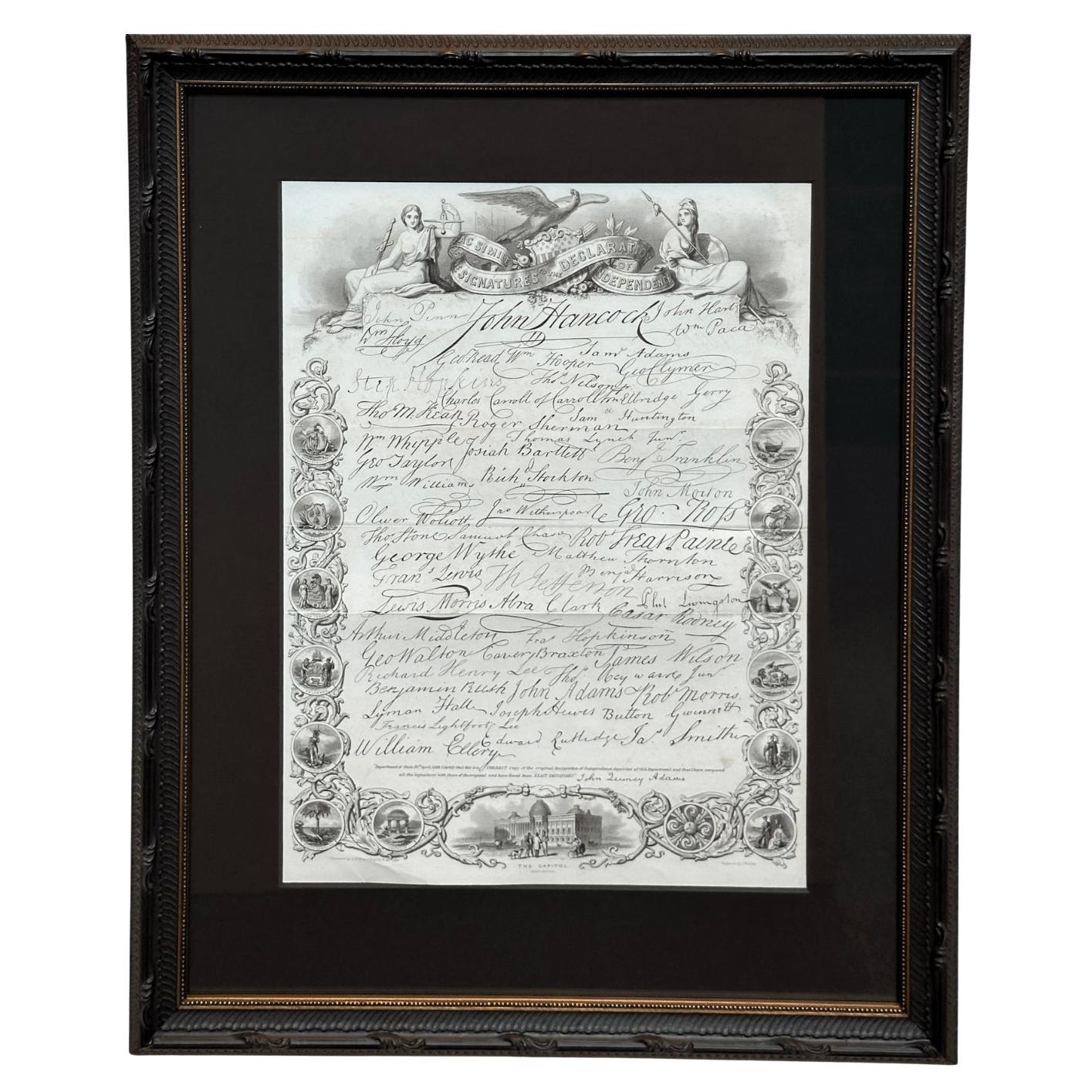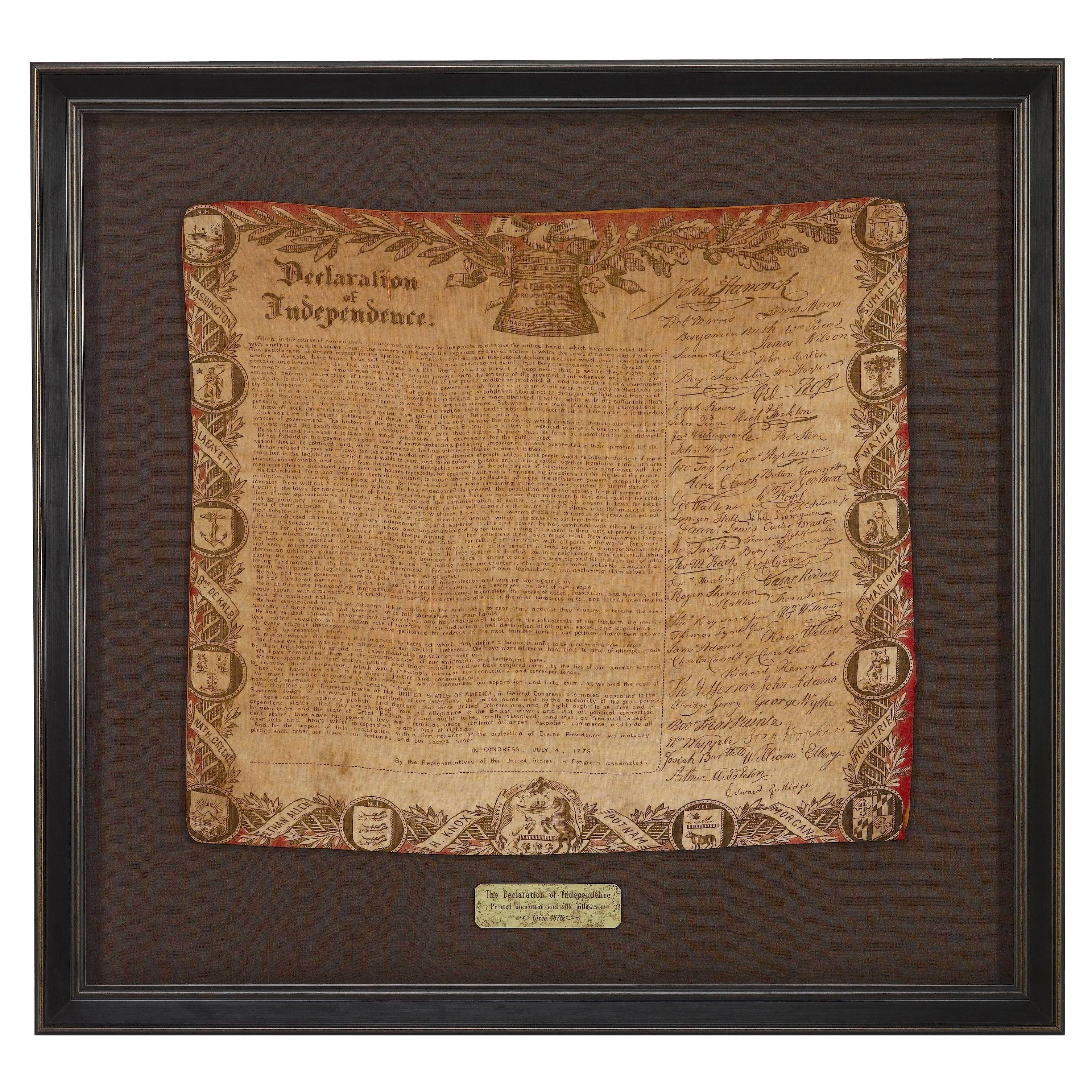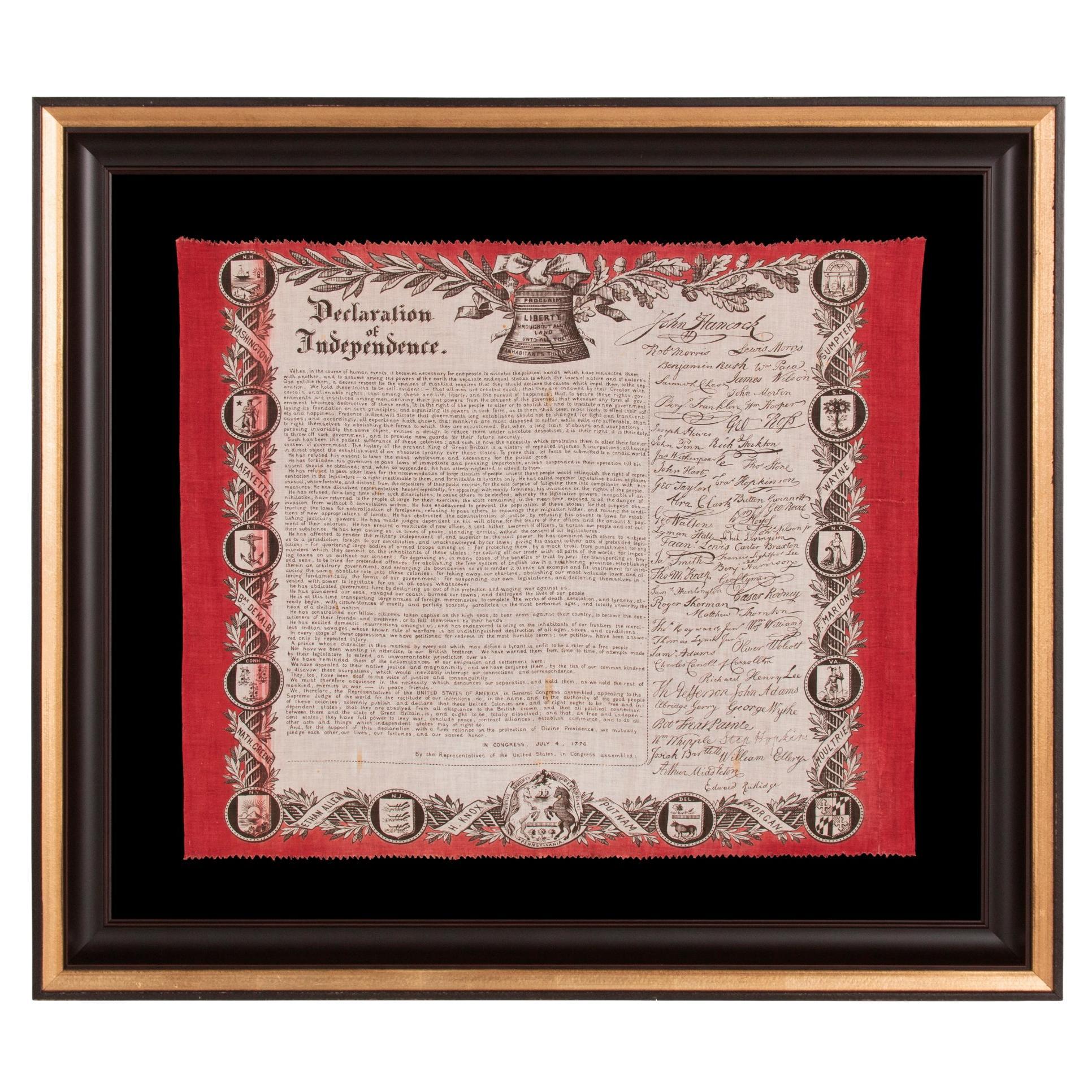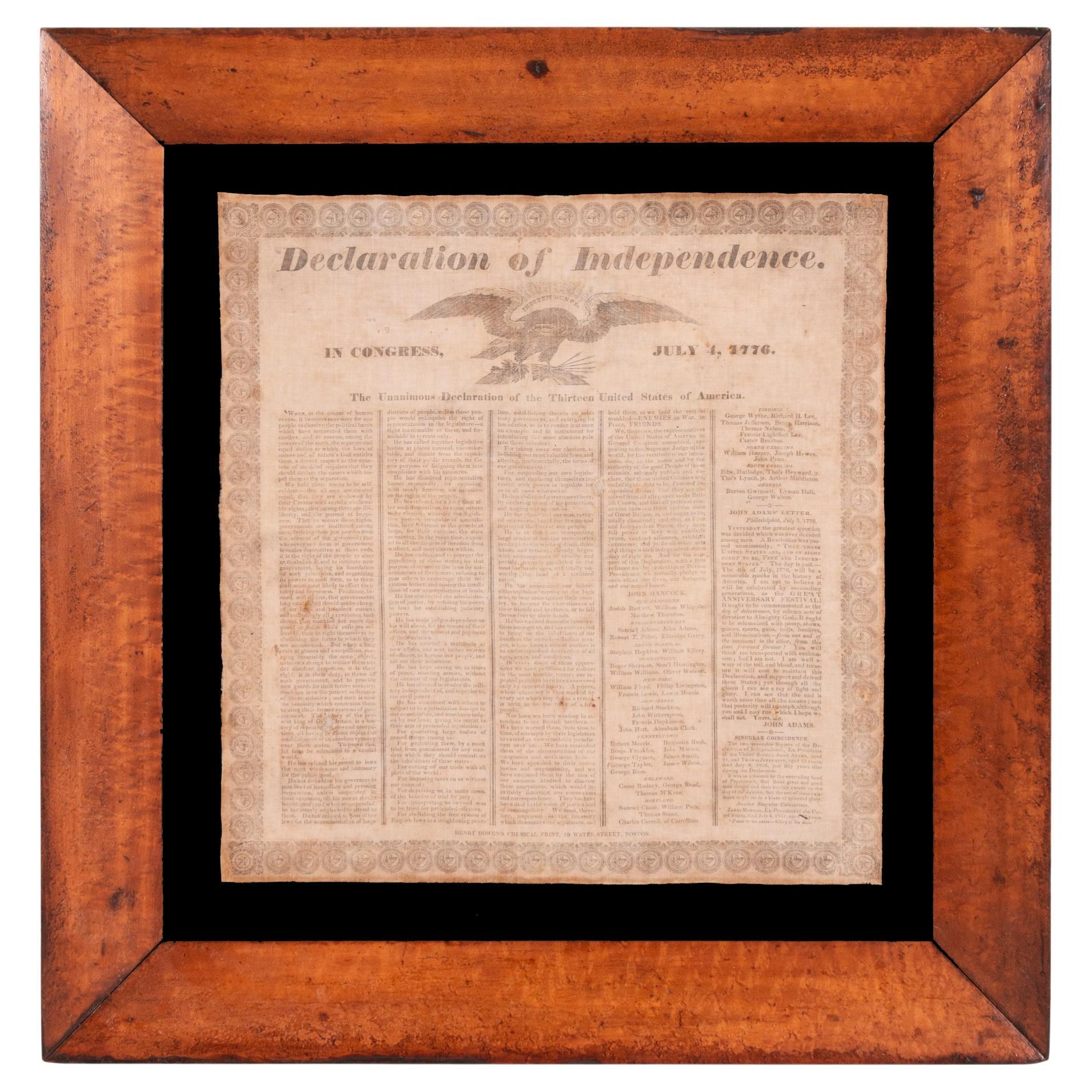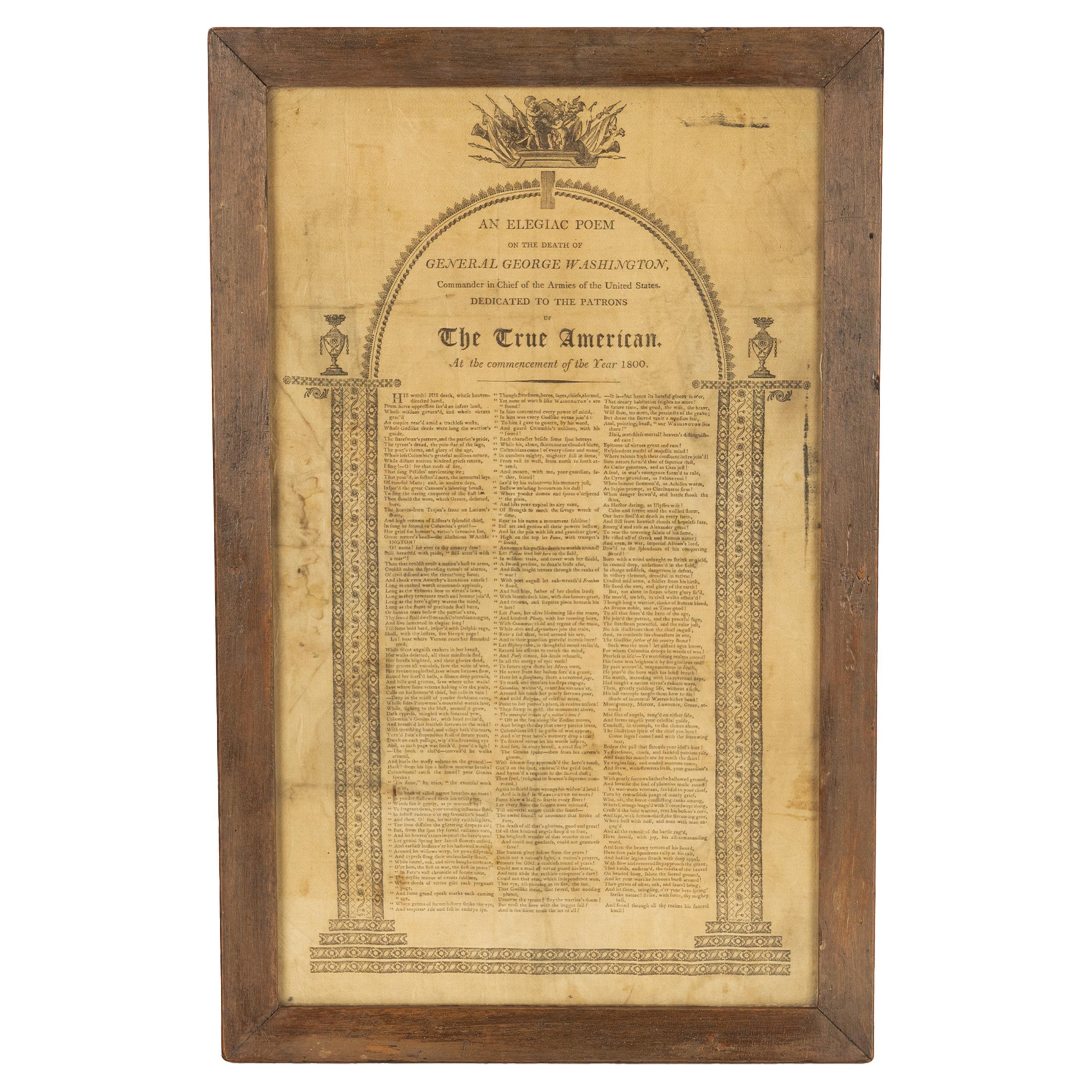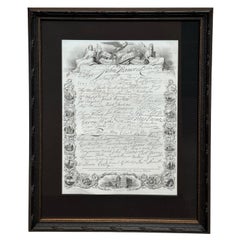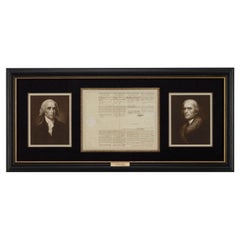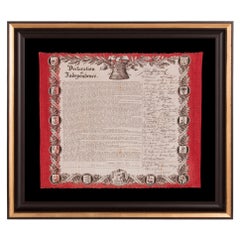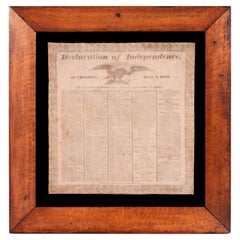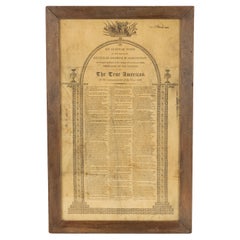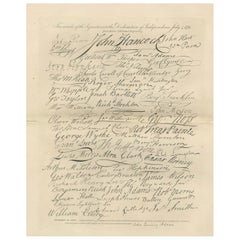Items Similar to 1829 "Declaration of Independence" Draft, Engraved by Charles Toppan
Want more images or videos?
Request additional images or videos from the seller
1 of 12
1829 "Declaration of Independence" Draft, Engraved by Charles Toppan
$12,500
£9,442.36
€10,912.67
CA$17,565.87
A$19,530.20
CHF 10,283.83
MX$236,960.03
NOK 130,198.35
SEK 121,703.72
DKK 81,436.70
About the Item
This historical and rare item celebrates one of the most influential writers, politicians, and American Revolutionary figures, Thomas Jefferson. Featured is a four-page facsimile steel-engraved draft of the Declaration of Independence, printed in 1829. The Declaration draft engraving was commissioned for the first biography of Thomas Jefferson, Memoir, Correspondence, and Miscellanies from the Papers of Thomas Jefferson, edited by Thomas Jefferson Randolph, Boston, and published by F. Carr, and Co., in 1829. All four pages of the draft were meticulously engraved by Charles Toppan.
In early May 1776, Jefferson made a weeklong journey to Philadelphia to be a delegate to the Second Continental Congress. The Congress appointed a committee of five men to draw up a statement explaining why the colonies wanted independence. They chose John Adams, Roger Sherman, Benjamin Franklin, Robert Livingston, and Thomas Jefferson.
At only thirty-three years old, Jefferson was one of the youngest members of Congress. A shy student of the Enlightenment, Jefferson was not a passionate speaker and said little during the meeting. But he was known and respected for his skill as a writer. The committee chose Jefferson to draft their Declaration of Independence. Over the span of two and a half weeks, writing and rewriting, Jefferson crafted an argument for independence and freedom, and penned perhaps the most celebrated sentence in American History, “We hold these truths to be self-evident, that all men are created equal, that they are endowed by their Creator with certain unalienable Rights, that among these are Life, Liberty and the pursuit of Happiness.”
All that remains of the first handwritten draft is a cut fragment that was found behind a picture frame in 1947. This small portion of Jefferson’s handwritten draft now lives in the archives at the Library of Congress, with the rest of the Jefferson Papers Collection. The fragment shows the process Jefferson went through when writing the Declaration of Independence; there are lots of crossed out sections, scribbles, and errors.
After Jefferson was content with what he wanted to say, he made an unknown number of clean copies to be shared with John Adams, Benjamin Franklin, and other members of the committee so they could add their thoughts and approve what Jefferson had written. Jefferson referred to this copy of the Declaration as the “Original Rough Draught.” This engraving is a facsimile of this “Original Rough Draught.” The majority of the 86 edits seen on this engraving of the draft are in the handwriting of John Adams and Benjamin Franklin. At a later date, most likely in the 1800s, Thomas Jefferson went back to his draft and annotated in the margins which changes were suggested by Adams and Franklin.
After the rest of the committee read the draft and provided their input, Jefferson made a final document, which included some of the committee’s edits, to be submitted to Congress. This version of the draft, known as the “Fair Copy,” was presented to Congress on June 28, 1776.
Comparing it to the final text adopted by Congress on the morning of July 4, 1776, the “Original Rough Draught” of the Declaration of Independence shows the evolution of the text, from start to finish. Thomas Jefferson was highly critical of the changes being made to the document he wrote. Most of the edits on this “Original Rough Draught” are additive, rather than subtractive. Changes such as capitalization, punctuation, inserting a forgotten word, or rephrasing certain sentences were suggested by Franklin and Adams. However, the edits made to the “Fair Copy” draft by Congress were much more extensive. The change Jefferson fought the hardest was the removal of an entire paragraph on the third page of the Declaration that attributed responsibility of the slave trade in the colonies to King George III. In his Autobiography, Jefferson explains why this passage was cut from the Declaration of Independence:
“The pusillanimous idea that we had friends in England worth keeping terms with, still haunted the minds of many. For this reason those passages which conveyed censures on the people of England were struck out, lest they should give them offence. The clause too, reprobating the enslaving the inhabitants of Africa, was struck out in complaisance to South Carolina and Georgia, who had never attempted to restrain the importation of slaves, and who on the contrary still wished to continue it. Our northern brethren also I believe felt a little tender under those censures; for tho’ their people have very few slaves themselves yet they had been pretty considerable carriers of them to others.”
Although Thomas Jefferson may have thought the removal of this paragraph was cowardly, the rest of his Declaration remained assertive, strong, and decisive and continues to be a sturdy foundational document for the United States of America hundreds of years later.
Charles Toppan (1796-1874) was a noted early antiquarian and the first to produce an engraved facsimile of Jefferson’s manuscript of the Declaration. Toppan opened his own engraving business in Philadelphia in 1829 at the age of thirty-three. Although other Philadelphia engraving firms, such as Draper, Underwood, Bald, Spencer & Hufty, were already well-established in the city, Toppan saw early success due to his fine artistic ability. After many partnerships throughout the nineteenth century, Charles Toppan & Co. would engrave many notable pieces of American history, including this Declaration facsimile, ornate bank notes, and stamps depicting contemporary figures in elaborate scrollwork. Today, many of his works are held in the Library of Congress and the U.S. Postal Museum.
CONDITION:
Facsimile Steel-engraved Draft of the Declaration of Independence. Philadelphia: Charles Toppan, 1829. Four folio-format wove paper sheets printed on rectos only. From Memoir, Correspondence, and Miscellanies from the Papers of Thomas Jefferson, edited by Thomas Jefferson Randolph, Charlottesville: F. Carr, and Co., 1829. First Edition. With old fold lines still present. Sheets measure roughly 13 ¾” H x 9” W.
The pages are artfully displayed together in separate inset windows, on acid free mats, with gold filet, and linen top mats. The pages are presented in a custom hand-built black and gold wooden frame. All framing elements are archival and to the highest conservation standards.
Framed Dimensions: 44 1/8"H x 32 1/8"W x 1 3/4"D.
Accompanied by our company's letter of authenticity.
- Dimensions:Height: 44.13 in (112.1 cm)Width: 32.13 in (81.62 cm)Depth: 1.75 in (4.45 cm)
- Style:Federal (In the Style Of)
- Materials and Techniques:
- Place of Origin:
- Period:
- Date of Manufacture:1829
- Condition:Additions or alterations made to the original: Archivally mounted and framed by Artem Art Services in Colorado Springs, Colorado, in May of 2025. Wear consistent with age and use. Minor fading.
- Seller Location:Colorado Springs, CO
- Reference Number:Seller: PR5161stDibs: LU909745012942
About the Seller
4.9
Platinum Seller
Premium sellers with a 4.7+ rating and 24-hour response times
Established in 2010
1stDibs seller since 2011
463 sales on 1stDibs
- ShippingRetrieving quote...Shipping from: Colorado Springs, CO
- Return Policy
Authenticity Guarantee
In the unlikely event there’s an issue with an item’s authenticity, contact us within 1 year for a full refund. DetailsMoney-Back Guarantee
If your item is not as described, is damaged in transit, or does not arrive, contact us within 7 days for a full refund. Details24-Hour Cancellation
You have a 24-hour grace period in which to reconsider your purchase, with no questions asked.Vetted Professional Sellers
Our world-class sellers must adhere to strict standards for service and quality, maintaining the integrity of our listings.Price-Match Guarantee
If you find that a seller listed the same item for a lower price elsewhere, we’ll match it.Trusted Global Delivery
Our best-in-class carrier network provides specialized shipping options worldwide, including custom delivery.More From This Seller
View All1818 Declaration of Independence Broadside Engraved by Benjamin Owen Tyler
Located in Colorado Springs, CO
This is a stunning 1818 engraving of the Declaration of Independence, the first engraved broadside of our nation’s founding document. The year 1815 saw the conclusion of the United S...
Category
Antique 1810s American Federal Prints
Materials
Paper
"Facsimile of the Signatures to the Declaration of Independence" by A.H. Wray
Located in Colorado Springs, CO
Presented is a handsome steel engraving, a patriotic composition of the facsimile signatures of the signers of the Declaration of Independence. The engraving is from John H. Hinton’...
Category
Antique 1850s American Federal Prints
Materials
Paper
Declaration of Independence, Printed on Cotton, Circa 1876
Located in Colorado Springs, CO
Presented is a Centennial-era patriotic textile, celebrating the Declaration of Independence. At the center of the printed bandana design is artistic rendering of the Declaration of ...
Category
Antique 1870s American High Victorian Political and Patriotic Memorabilia
Materials
Cotton
Thomas Jefferson and James Madison Ship's Passport Signed, November 5, 1804
Located in Colorado Springs, CO
This rare official document, dated November 5, 1804, is signed by both Thomas Jefferson as the nation's third President and James Madison as Secretary of State. The document, partial...
Category
Antique Early 1800s American Federal Historical Memorabilia
Materials
Paper
1864 Engraving of Lincoln's "Proclamation of Emancipation" by Charles Shober
Located in Colorado Springs, CO
This 1864 engraving features the Emancipation Proclamation in elaborate calligraphic text, with five patriotic vignettes and a small portrait of Lincoln. This is the second issue of ...
Category
Antique 1860s American American Classical Prints
Materials
Paper
"Washington Delivering His Inaugural Address" Engraving by H. S. Sadd, 1860
Located in Colorado Springs, CO
Presented is a patriotic engraving titled “Washington Delivering His Inaugural Address. April 1789, in the old City Hall, New-York.” The print was engraved by Henry S. Sadd, after a ...
Category
Antique 1860s American Federal Prints
Materials
Paper
You May Also Like
The Declaration of Independence, Printed on Cotton, ca 1876
Located in York County, PA
PRINTED COTTON KERCHIEF GLORIFYING THE DECLARATION OF INDEPENDENCE, WITH TEXT AND REPRODUCED SIGNATURES, MADE FOR THE 1876 CENTENNIAL INTERNATIONAL EXPOSITION IN PHILADELPHIA
Printed on cotton, this beautiful kerchief pays homage to the Declaration of Independence, through the reproduction of its text and 56 signatures, surrounded by a fanciful border. The latter contains the 13 state seals, which are dispersed around the perimeter in small medallion images. Note how Pennsylvania is highlighted among them, larger and in the bottom center, both because it served as the meeting place of the Second Continental Congress, and played host to the 1876 Centennial International Exposition, the six-month long World’s Fair event that was held in honor of our nation’s 100-year anniversary of independence.
The names of twelve Revolutionary War generals are spread out between each crest, on each forward-facing turn of a scroll, that wraps around the pillar and leaf border on the right, left, and bottom. These include Washington, Lafayette, Johann de Kalb, Nathiel Greene, Ethan Allen, Henry Knox, Israel Putnam, Daniel Morgan, William Moultrie, Francis Marion...
Category
Antique Late 19th Century American Political and Patriotic Memorabilia
Materials
Cotton
Price Upon Request
Declaration of Independence on Cloth, Printed in Boston 1832
Located in York County, PA
COPY OF THE DECLARATION OF INDEPENDENCE ON CLOTH, PRINTED IN BOSTON IN 1832 TO MEMORIALIZE THE PASSING OF THE LAST SURVIVING SIGNER, CHARLES CARROLL OF MARYLAND, IN THE YEAR THAT COI...
Category
Antique 1830s American Political and Patriotic Memorabilia
Materials
Cotton
Price Upon Request
Antique Silk Broadside An Elegiac Poem Death of President George Washington 1800
Located in Portland, OR
An important & rare antique American political printed silk broadside, an elegy on the death of President George Washington, dated 1800.
A poem on the Death of President George Was...
Category
Antique 1790s Federal Political and Patriotic Memorabilia
Materials
Silk
Declaration of Independence Signatures Facsimile – Binns Engraving, 1850s
Located in Langweer, NL
Declaration of Independence Signatures Facsimile – Binns Engraving, 1820s
This antique facsimile presents the signatures of the signers of the Declaration of Independence, July 4, 1...
Category
Antique 1850s Prints
Materials
Paper
18th Century Inn License in a Gilt Frame
Located in Queens, NY
Original 1790 NY state inn license letterpressed in a faux gilt and lacquer frame.
Category
Antique 19th Century American Country Prints
Framed Antique Vellum Land Indenture, 1811, London
Located in Morristown, NJ
Vellum land indenture, 1811, London. Parties mentioned include Richard Phillip Higham, Henry Parry, and John Alliston.
The document contains two seals. The blue seal is likely a scrivener's seal. Scriveners were granted authority to draft contracts, wills, and documents similar to deeds that conveyed assets from one party to another. The red wax seal...
Category
Antique 1810s British Georgian Decorative Art
Materials
Animal Skin, Glass, Wood
More Ways To Browse
Antique Georgian Cut Steel
Georgian Pens
George Spencer
Underwood 4 Bank
Bed Steps
Bernardaud Vintage
Blaeu Wall Map
Brass Bound Bucket
Brass Clam Shell
Brass Clock Garniture
Brass Deer
Bronze Bulldog
Bronze Egg On Stand
Bronze Egyptian Urns
Bronze Judith
Bronze Pair Of Chinese Lions
Bronze Pharaoh Sculptures
Bronze Roman Warriors
